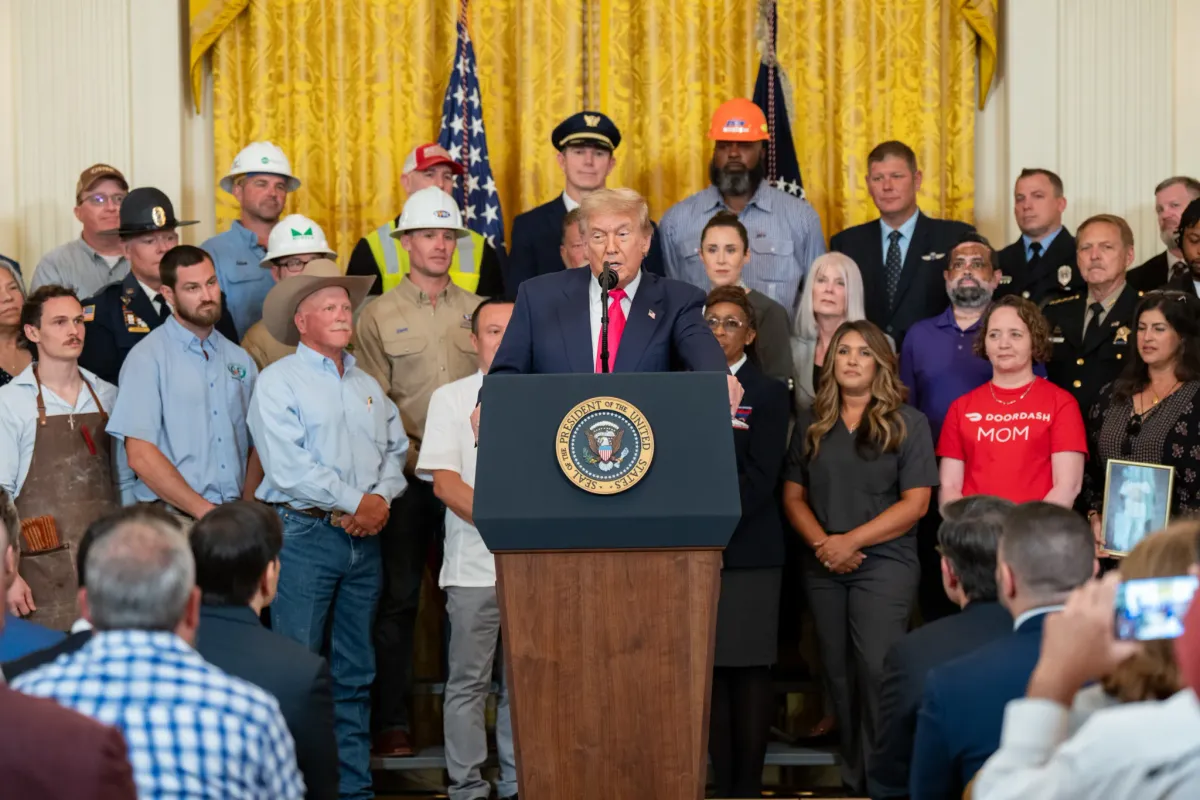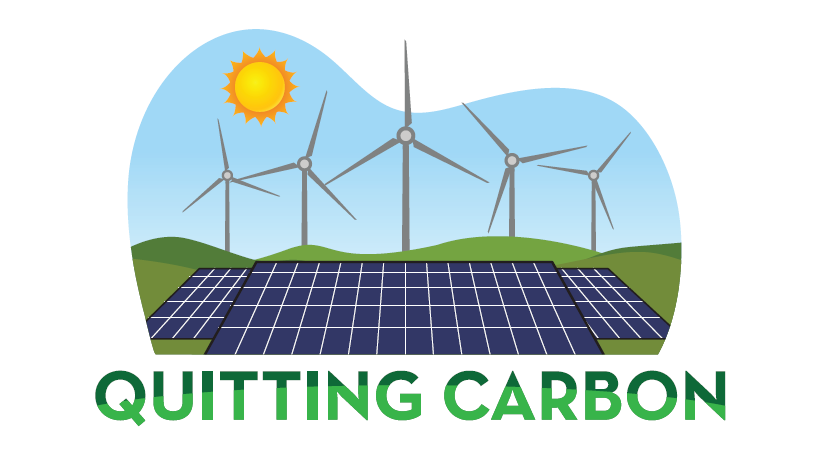Trump has declared war on wind and solar power. It’s time for the industries to fight back.
Wind and solar are the cheapest power sources being added to the grid. But now under attack during Trump 2.0, the industries must build political power to preserve their future.

Quitting Carbon is a 100% subscriber-funded publication. To support my work, please consider becoming a paid subscriber or making a one-time donation.
Last Friday, the Trump administration launched a major escalation in its war on wind power.
The U.S. Department of Interior’s Bureau of Ocean Energy Management (BOEM) issued a stop-work order for Revolution Wind, a $6.2-billion, 704-megawatt project under construction offshore Rhode Island and Connecticut. In April, the administration had issued a stop-work order for the Empire Wind project offshore New York, where at-sea construction had just started, only to lift the order a month later.
But for Revolution Wind, the stop-work order arrived when the project was 80% complete. The developer, the Danish energy giant Ørsted, had already installed all turbine foundations and 45 of 65 wind turbines. The project was scheduled to start delivering power to 350,000 New England homes by next spring.
The only justification given by BOEM for the unprecedented action was vague “concerns related to the protection of national security interests of the United States.” Interior Secretary Doug Burgum went on CNN this week to claim that “there’s concerns about radar relative to undersea … drones. People with bad ulterior motives to the United States would launch a swarm drone attack through [a] wind farm, the radar gets very distorted.” This came despite the Defense Department concluding in 2023 that the project posed “negligible and avoidable” natural security impacts.
OLLINS: But the Pentagon reviewed this wind project in 2023 & found that there were negligible national security impacts BURGUM: In particular there's concern about radar relative to undersea drones...people with bad ulterior motives to the US would launch a swarm drone attack through wind farms
— Aaron Rupar (@atrupar.com) 2025-08-27T01:44:40.652Z
The Trump administration didn’t stop there. In a court filing registered last Friday, the Justice Department said Interior plans to rescind the federal approval for US Wind's Maryland Offshore Wind Project by September 12.
Whether it is to reward its fossil fuel industry backers and to delay the energy transition, or to feed Trump’s disdain for wind and solar power, it’s clear this administration is determined to smother the industries.
The wind and solar industries clearly weren’t prepared for this onslaught. What are they prepared to do to fight back?
Losing the political war
No matter the reasons for Trump’s assault, the wind and solar industries need to acknowledge that the White House has declared war on their companies and employees, and they must respond with overwhelming force.
I described in February, months before the issuance of the first stop-work order, my incredulity at the California offshore wind industry’s apparent lack of alarm over the threat the new Trump administration posed to their industry.
It was time then – and even more so now – for offshore wind and the other targeted industries to adopt a wartime footing to protect their interests.
Despite the wind and solar sectors’ phenomenal growth over the past 15 years, they have been dramatically outspent by fossil fuel incumbents when it comes to advancing their agendas in Washington – a disparity that proved costly in the fight over the GOP budget reconciliation bill.
“When you are deploying twice as much CapEx per year as the oil and gas sector, which in and of itself is the largest oil and gas sector in the entire world with 14 million barrels a day of drilling, and you spend 1/20th of the budget on influence as the oil and gas sector did, you brought this on yourself,” said Jigar Shah, the director of the Department of Energy’s loan office during the Biden administration and co-host of Latitude Media’s “Open Circuit” podcast, on the show’s July 14 episode, shortly after the passage of the Republicans' One Big Beautiful Bill (OBBB).
“We do not have the political power necessary to thrive and to meet the economic needs of our country. And so people need to understand what that means. That doesn’t mean Democrats, by the way, it just means that for all of these places, they were so afraid of Donald Trump that they were willing to destroy the economics of their district and vote for Trump’s bill. That is a wake-up call if I’ve ever seen one,” said Shah.
Shah’s fellow co-host, Katherine Hamilton, chair of the Washington, D.C.-based consultancy 38 North, replied that voters need to hold members of Congress responsible for voting to cut clean energy – especially the two-dozen House Republicans who made such a show about supporting the Inflation Reduction Act’s clean energy tax credits, only to all fold and vote to eviscerate those tax credits in the OBBB.
“They need to be held accountable. There has to be pain felt about taking these votes when they wrote letters after letters clutching their pearls and saying, ‘Oh, we’ll never vote for a bill that does any harm to our constituents,’ whether it was for Medicaid cuts or whether it was for clean energy cuts, and they all got in line and voted,” said Hamilton.
Mobilizing for the fight ahead
The wind and solar industries should have gone on offense sooner.
“It is clear now that the best thing the US wind industry could have done to secure its ongoing health & growth– by FAR, not even close --is to prevent Donald Trump from winning the election. Instead it listened to consultants, rhetorically humped the leg of 'bipartisanship,' & is getting fucked,” Volts’ David Roberts wrote on Bluesky on Tuesday.
It is clear now that the best thing the US wind industry could have done to secure its ongoing health & growth-- by FAR, not even close --is to prevent Donald Trump from winning the election. Instead it listened to consultants, rhetorically humped the leg of "bipartisanship," & is getting fucked.
— David Roberts (@volts.wtf) 2025-08-26T18:07:55.386Z
I would have put it … more delicately, but Roberts’ analysis is correct. Far too many interests with much to lose chose to play it safe during the last election, even with so much at stake. Trump did not hide his hostility for wind power before and during the 2024 presidential campaign.
But now that Trump 2.0 is trying to destroy large-scale wind and solar power in the U.S. – especially the beleaguered offshore wind sector – the project developers, manufacturers, and investors that have worked so hard to build these industries need to mobilize the resources to safeguard their future. Already, U.S. renewable energy investment in the first half of the year declined by 36% from the second half of 2024, according to a new analysis from BloombergNEF.
Wind and solar interests should dig deep to close the gap with the fossil fuel incumbents’ outlays for influence in Washington, D.C.
An analysis from the advocacy group Climate Power “found the oil industry had spent $450 million on a combination of donations, lobbying and advertising during the 2024 election cycle,” reported the New York Times’ Lisa Friedman.
They should wage lawfare to uphold approved project permits and to enforce contracts.
Ørsted’s statement in response to the Revolution Wind stop-work order said the company “is evaluating the potential financial implications of this development, considering a range of scenarios, including legal proceedings.” When Equinor received its stop-work order for Empire Wind, it responded with this: “Empire is engaging with relevant authorities to clarify this matter and is considering its legal remedies, including appealing the order.”
Weak. Neither statement signaled that the companies were girding for a fight.
The companies prepared these milquetoast responses despite the Trump administration pursuing such maximalist outcomes based on flimsy legal reasoning.
“The rationale is shockingly thin,” Michael Gerrard, director of the Sabin Center for Climate Change Law at Columbia University, told the New York Times.
Would the administration have thought twice about issuing the Revolution Wind stop-work order had the offshore wind industry responded more assertively to the Empire Wind work stoppage? We’ll never know, but it’s time to test the premise.
They should proactively counter the aggressive, well-funded, fossil-fuel industry-backed nationwide anti-renewables misinformation campaigns that have started to influence Trump administration policies.
Given oxygen by a proliferating network of astroturf groups, these misinformation campaigns have spurred the adoption of bans on wind and solar projects in local jurisdictions across the country.
“We have over 20% of all the counties in the United States now that have banned solar and wind deployment on their land. And for a long time, the solar and wind industry were like, ‘We don’t care because we can work on the other 80% of counties.’ Well, it’s time to care. It’s time to actually care,” said Shah on "Open Circuit."
They should inspire and organize people across the country to step up to protect renewable energy.
Bill McKibben and Fossil Free Media’s September 21 Sun Day “Earth Day for clean energy” is a good start.
They should lock arms and find common cause with the larger business community and their fellow clean energy companies.
The day after Trump’s inauguration, the U.S. Chamber of Commerce released a statement praising the “steps taken by President Trump to increase domestic energy production and enhance energy security.” “With energy demand increasing at home and abroad, it is critical that we unleash American energy to benefit consumers and our allies,” said Marty Durbin, president of the Chamber’s Global Energy Institute.
Where is the Chamber’s statement condemning the freezing of a multi-billion-dollar offshore wind project that was putting thousands of Americans to work and adding much-needed electricity to the grid?
Some clean energy sectors – hydropower and marine energy, geothermal energy and nuclear power – appear to be favored by the administration – for now. But companies in these sectors would be making a mistake if they believe they can evade Trump’s ire indefinitely, or follow the lead of the universities, white-shoe law firms, and media companies that have attempted to appease him with settlements.
As North America’s Building Trades Unions President Sean McGarvey said in response to the Revolution Wind stop-work order: “If President Trump can do this to an almost-finished energy project, he will do it to more projects in other sectors, too, and every owner, investor, and contractor at every project stage should be deeply concerned.”
The business community – clean energy companies and their D.C.-based trade associations as well as powerful lobbying groups like the Chamber and the Business Roundtable – should join forces to demand that the Trump administration uphold the rule of law, honor contracts, and restore regulatory certainty.
A governing majority for climate action
The wind and solar industries have grown so large that they threaten the decades-long dominance enjoyed by the fossil fuel incumbents. Now they need to act like incumbents themselves and zealously defend and advance their interests in state capitals and in Washington, D.C.
Some tax deductions used by the oil and gas industry are many decades old. The federal intangible drilling costs tax deduction dates to 1916.
The companies committed to climate action – solar and wind, yes, but also advanced geothermal and next-generation nuclear, energy storage and marine energy, energy efficiency and electric mobility – need to come together to build a political operation as powerful as the one that has enabled the oil and gas industry to preserve a key tax break for more than a century.
It will take building long-term relationships not just with current members of the U.S. House and Senate but also with the city councilmembers, mayors, county commissioners, state legislators, and governors who are next in line to join them in Washington.
It will take, in short, building a governing coalition capable of and willing to check this president, or any future president, if he or she dares to block climate action.




